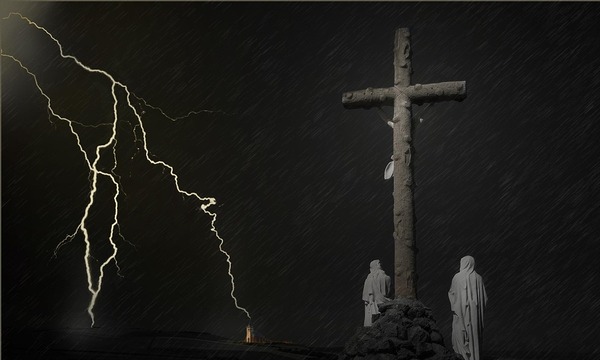Many Christians who have grown in the church had the experience of memorizing the names of the books of the Bible while they were children. What most did not realize, however, is that not all manuscripts of the Bible have the same order and scholars debate which is the correct order. Christians might know of the debate between Catholics and Protestants about the inclusion of certain books in the canon like Judith and 1 Maccabees, a set of books called the Apocrypha by Protestants and the Deuterocanonical books by Catholics. However, much less well-known is the debate about the order of Old Testament books.
The order familiar to most western Christians is based in four sections: Law, History, Poetry and Prophets. This order has an ancient heritage in the Greek translation of the Old Testament, called the Septuagint. However, the ancient Hebrew manuscripts had only three sections: Torah, the Nevi’im and the Ketuvim (see below). Based on an acronym of these three words, it is sometimes called the Tanak. The first section, the Torah, is the same as the Law. However, the second section, the Nevi’im, differs in content and order from the English order. The Nevi’im (which means “Prophets”) has two sub-sections. The first, the former prophets, is similar to the History section of the English Bible: Joshua, Judges, Samuel and Kings. The second, the latter prophets, is similar to the Prophets section: Isaiah, Jeremiah, Ezekiel and the Minor Prophets. The third section, called the Ketuvim (which means Writings), contains everything else, and it is here that the order becomes quite fluid between different Hebrew manuscripts. I have included below one of the standard orders, but other manuscripts have different orders.
Jewish (Hebrew) Canon
Torah
- Genesis
- Exodus
- Leviticus
- Numbers
- Deuteronomy
Prophets (Nevi’im)
Former Prophets
- Joshua
- Judges
- 1 & 2 Samuel
- 1 & 2 Kings
Latter Prophets
- Isaiah
- Jeremiah
- Ezekiel
Minor Prophets
Writings (Ketuvim)
- Psalms
- Job
- Proverbs
- Ruth
- Song of Songs
- Ecclesiastes
- Lamentations
- Esther
- Daniel
- Ezra
- Nehemiah
- 1 & 2 Chronicles
Does all of this matter? Part of the debate is about the level of inspiration: Does inspiration only extend to the construction of individual books, or also to the construction of the Old Testament? Regardless of the answer to that question, canonical placement can at least open our eyes to interpretive possibilities. To illustrate these possibilities, I will examine the various homes of Ruth in the canon (the picture above shows Bethlehem in the distance, the geographical home of Ruth).
The location of Ruth most familiar to western Christians is after Judges, which is a natural location because the book opens with the words “In the days of the judges.” Thematically, Ruth presents a much more positive view of the time period than Judges and highlights the kindness and devotion of Boaz and Ruth when contrasted with characters at the end of Judges like Samson and the Levite. The book also looks forward to the next book, Samuel, because it ends with a reference to David, a descendant of Ruth. This genealogy highlights the important role of David in Israelite history: the book of Ruth was never just a story about a marriage in a small town, but it played an important role in the plan of God for Israel.
However, many Hebrew manuscripts place Ruth as the first book of a sub-collection called the Megillot, five smaller books that are all connected with festivals (see below). This highlights the continued relevance of Ruth for modern times as the book is read every year during Shavuot (also called Pentecost). However, one effect of this placement is that Ruth follows Proverbs. Proverbs ends with a description with the virtuous woman (sometimes called the Proverbs 31 woman). When the book of Ruth is read immediately after Proverbs, Ruth becomes the living embodiment of this Proverbs 31 woman. This connection is strengthened verbally, as the phrase used to describe the virtuous woman (אשת חיל) in Proverbs 31:10 occurs only two other times in the Old Testament: Proverbs 12:4 and Ruth 3:11, where it describes Ruth. The irony, of course, is that she is not even Israelite! This expansion of her character to be a model of the Proverbs 31 woman even though she is a Moabite woman is significant when thinking about the Jew-Gentile conflict in the early church and racial divisions that still plague the church today.
Books of the Megillot
- Ruth – Shavuot (Weeks or Pentecost)
- Song of Songs – Passover
- Ecclesiastes – Sukkot (Tabernacles)
- Lamentations – Tisha b’Av (Ninth of Av)
- Esther – Purim
Finally, other Hebrew evidence (from the Talmudic document Baba Batra) places Ruth as the first book of the Writings, immediately before Psalms. This order emphasizes David’s role in the writing of other material in the Old Testament since the Psalms contains many texts which are ascribed to David. The events of the story of Ruth led to the creation of much of this wonderful book of the Old Testament.
In sum, my point here is not to argue for one of these positions of Ruth to be the correct position, but to highlight how each location of the book can open our eyes to interpretive possibilities for the book and show even more the depth of the riches of the book.
 Biola University
Biola University



.jpg)
